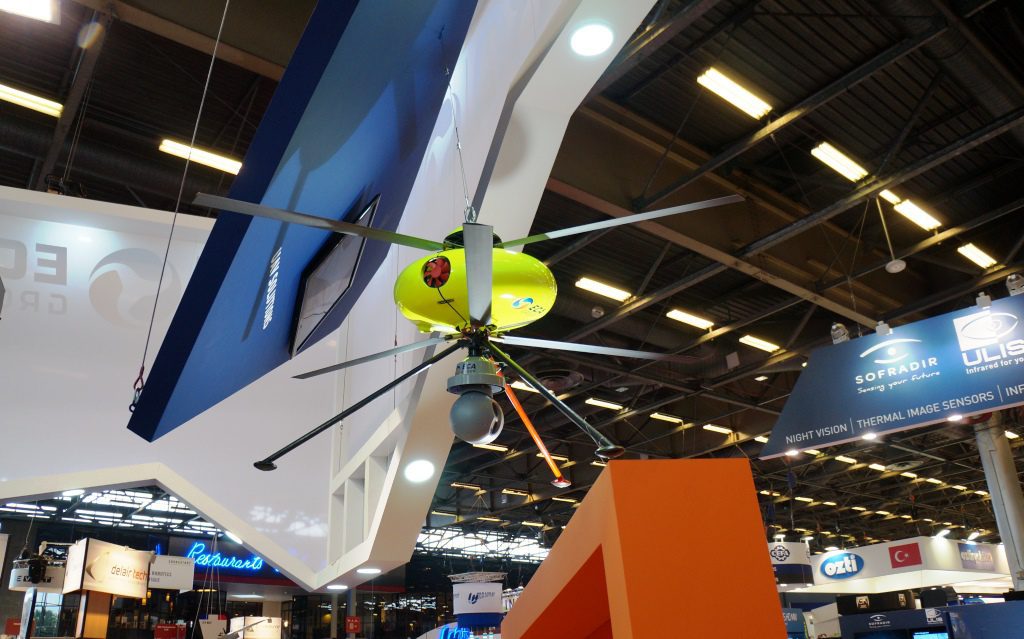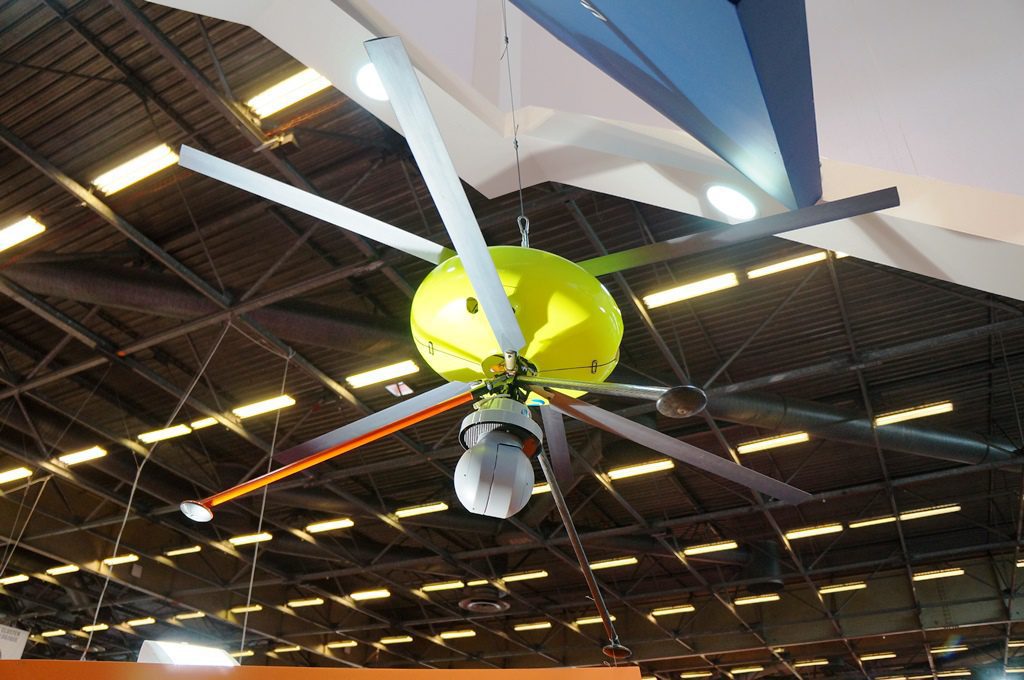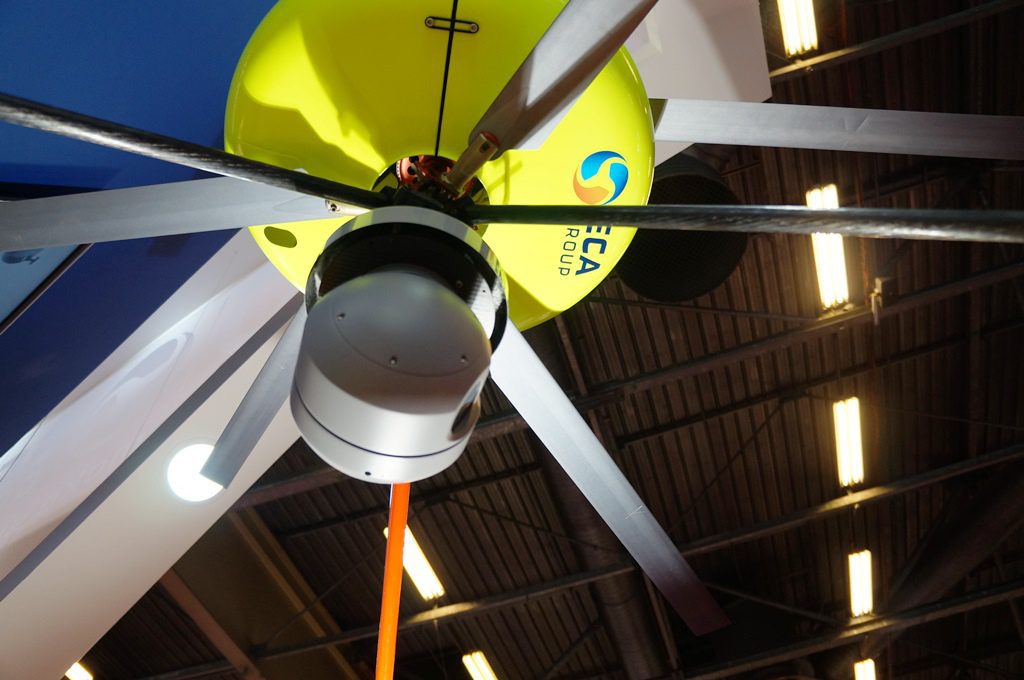In 3 sorsi (MS) – At Euronaval 2016 (17-21 October) the French group ECA has been awarded the Euronaval prize in the “Drone-robotique-systèmes autonomes” section for the STERNA system, aimed at easing and speeding magnetic measurement
1. STERNA and the UAV IT180 – The identification of portable solutions for magnetic measurement is at the core of ECA group activities. The portable magnetic range system STERNA represents a merger of these solutions. The system consists of a three axis fluxgate magnetometer and its digitizer, both embedded in ECA group IT180. The magnetometer and its digitizer are both mounted on one of the UAV feet. The carrier represents another interesting innovation. The STERNA patent is part of a broader array of IT180 naval applications, a new feature for this peculiar unmanned system. Launched at Eurosatory 2016 in its Air/Land configuration, this UAV is already in use within the French Armed Forces. A number of features make IT180 an interesting and technologically advanced asset:
- Architecture: stability and resistance to wind and other climate conditions (usually heavily affecting UAV operability) are ensured by two contra rotating blades and two swashplates.
- Payloads: this system has multiple payload capability, as equipment can be embedded on the fixed central tube (as STERNA), at the top and at the bottom, or in both. A number of payloads can be already supplied by ECA (i.e. EO/IR cameras, orthophoto cameras), and others could be associated according to the customers’ needs.
- Configuration: all the versions of the system can be used in free flight and in tethered configuration. The tethered mode brings different advantages to the users: limited take-off and landing area, easy integration and rapid deployment, unlimited flying time.
2. OPERATIONAL REQUIREMENT – The systems responds to the need of controlling and managing magnetic threats on a specific operational theatre, and to assess them effectively, promptly and with minimum risks. In particular, the system counter mine threats and MAD (Magnetic Anomaly Detection) by calculating their risks and operating degaussing. The magnetic signature of vessels due to building material and on-board instruments increases its exposure to specific threats. The two here considered are underwater mines (which follow magnetic signatures to find and strike to their targets) and detection from patrol aircraft. In order to avoid or delay detection, the magnetic signature can be lowered thanks to protection measures. Passive measures include building measures (i.e. the use of non-magnetic building materials) and magnetic treatments (also known as deperming), while the active one is degaussing. While deperming minimizes the external magnetic field disturbance by reducing the magnetization of ferromagnetic structures, degaussing creates an opposite field to the external disturbance. To date the measuring of magnetic threats has been pursued thanks to fixed range or portable underwater range tools; as STERNA is UAV embedded, it offers a portable aerial range system.
Fig. 1 – IT180 at Eurosatory. Credits: Il Caffè Geopolitico
3. FUNCTIONING – The system can be stored on board and used according to the operational needs bacause it is containerized (the UAV has a 1 m3 handling a storage box). The whole mission can be performed in one hour: 15 minutes for the deployment, and up to 45 minutes for measurement (existing systems need a whole day for measurement). The measurement can be accomplished by a single operator. The UAV, used in free flight configuration, can take-off, and then land, from the dock. A limited 25 m2 area is needed for these phases. IT180 is remotely controlled via radio data link. So it overflies the vessel and transmits data on-board during the mission, that can be flown autonomously. During the process, the UAV flies at a 25 meter hight, with a 20 kn speed, the vessel having a 4-6 kn speed; the UAV covers a 40 meters long area above the vessel. While mapping the vessel, STERNA detects magnetic risks through its mission tailores software and, after parameters computation, adjusts degaussing. Data gathered through the system are transmitted in real time and can be stored. The main strengths of IT180 play here an important role. As the carrier is particularly stable and can operate in harsh conditions (wind, heat, snow, rain), the mission could be flown above shallow waters, as well as high seas, closer to the operational environment. Furthermore, thanks to specific algorithms, the STERNA system can also compensate for eventual sensor errors (i.e. orthogonality, sensibility) and for the carrier magnetic influence.
Video 1 – Sterna consists in a magnetometer and its digitizer embedded in UAV IT180 airborne drone (developed by ECA Group)
Giulia Tilenni
[box type=”shadow” align=”” class=”” width=””]Un chicco in più
ECA Group is a France based company. Founded in 1936 as Étude and Constructions Aéronautique, the firm has acquired an extensive experience in robotics, simulation and automated systems. To date the Group is organised in three departments – Robotics, Aerospace and Simulation. [/box]
Foto di copertina di SurfaceWarriors Rilasciata su Flickr con licenza  Attribution-ShareAlike License
Attribution-ShareAlike License






